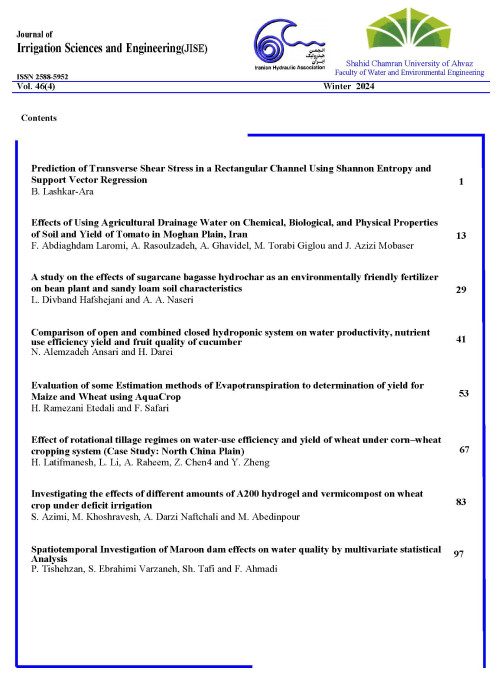Mathematical modeling of energy loss on Stepped Spillway Using ANSYS-CFX Numerical Model
A stepped spillway consists of steps that start from near the crown and continue to downstream heel. Generally, the amount of energy dissipation in stepped spillway is more than the one of flat spillways (with no steps) with the same dimensions. The high amount of energy dissipation caused by steps allows reducing the depth of drilling of downstream stilling basin, length of stilling basin, and the height of sidewalls. This way, a considerable economic saving is achieved in the implementation of dams. Since spillways help reduce flow rate and increase intake airflow rate, they can be referred to as a combination of a spillway and an energy dissipater. Some of the studies on stepped spillways are as follows:Launder and Spalding (1972); Olsen and Kjellesvig (1998); Chen et al. (2002); Tabbara et al. (2005); Dermawan et al. (2010); Sori and Mojtahedi. 2015; Haji azizi et al. (2016) So far, the studies on stepped spillways have been mostly on experimental and physical models. However, experimental and physical models are costly and sometimes have limitations such as required space and a large number of tests. This necessities consideration of further mathematical and numerical models. Several numerical models can be introduced to analyze flow on a stepped spillway. CFX is one of the numerical models. CFX has been known as one of the most robust software for fluid flow analysis and heat transfer. The finite volume method (FVM) is a numerical method to solve the governing differential equations, which is capable of simulating complexities of a turbulent flow on a spillway appropriately. On the other hand, CFX numerical model uses the coupled model, which increases the speed to achieve results considerably as compared to other numerical models. This research aims at simulating a stepped spillway using CFX numerical model and assessing the amount of energy dissipation under geometric parameters (such as spillway height, spillway gradient, number of steps, and height of steps) and hydraulic parameters (such as flow rate). The difference between this research and other studies can be attributed to the coherence and correlation in studying various components (geometric and hydraulic parameters) and the ability of CFX numerical number in replacing some of the costly and time-consuming tests.
- حق عضویت دریافتی صرف حمایت از نشریات عضو و نگهداری، تکمیل و توسعه مگیران میشود.
- پرداخت حق اشتراک و دانلود مقالات اجازه بازنشر آن در سایر رسانههای چاپی و دیجیتال را به کاربر نمیدهد.



